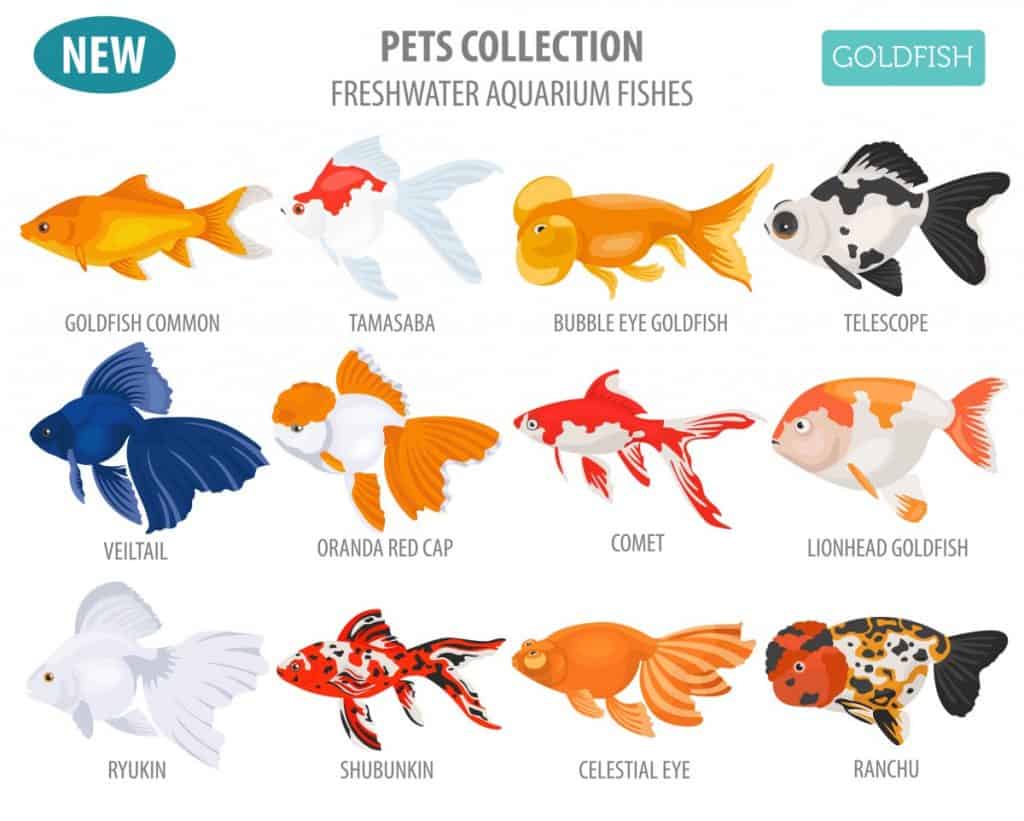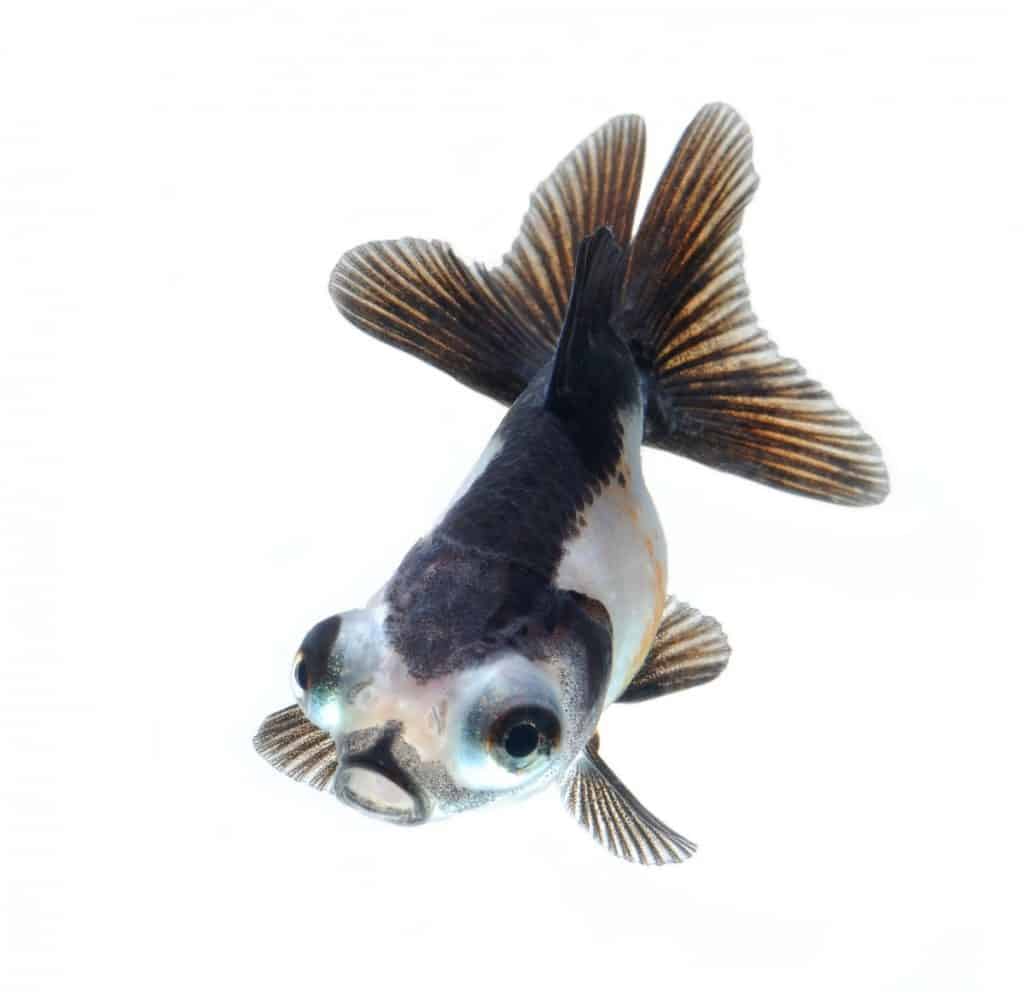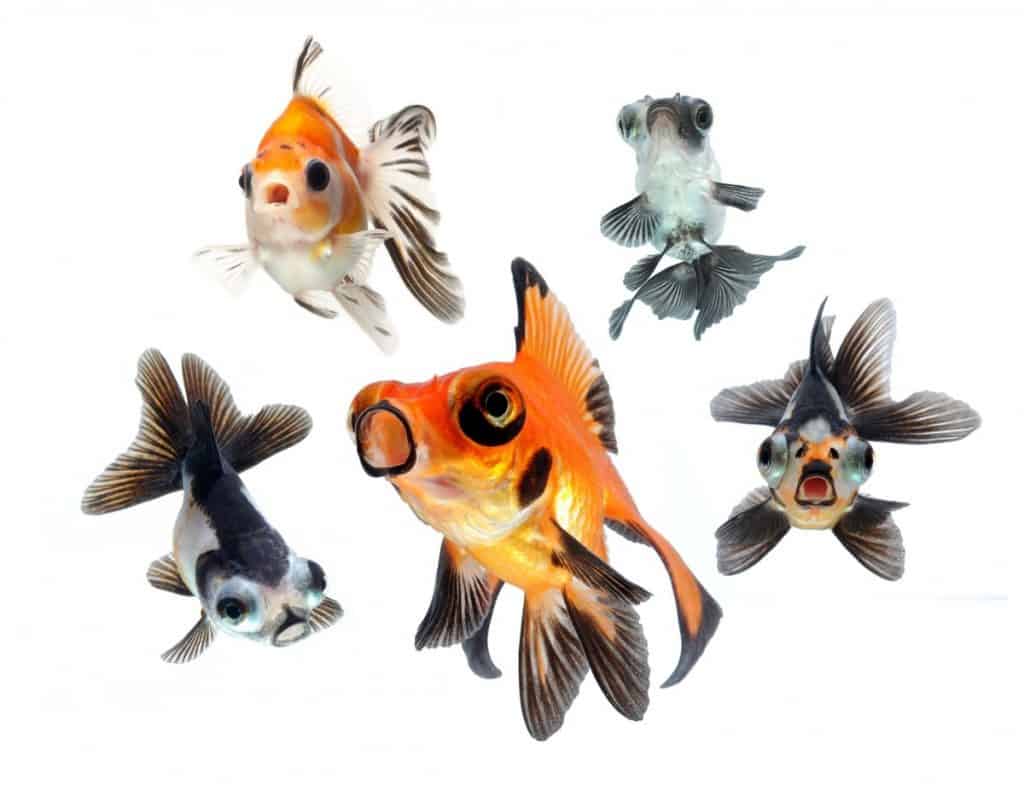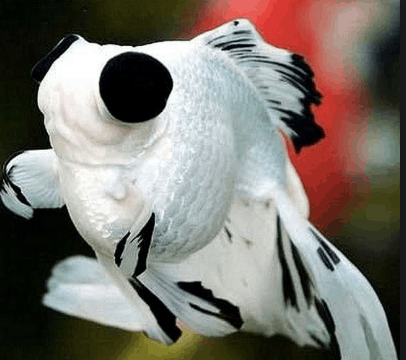Like you, I have seen many goldfish in my time and plenty of unusual cold water fish but this Panda Telescope is one of the strangest looking I have ever seen.
I know there are some strange and weird fish in the sea but cold water fish are all very similar in shape, size and color.
The Panda Telescope is one that stands out to me thanks to its amazing colors, size and patterns.
Let us take a look at this wonder fish and see if it maybe one for you to purchase. This will definitely be a show stopper and have all your friends and family gazing at your aquarium for hours.
Table of Contents
Species Profile
| Scientific Name | Carassius auratus |
|---|---|
| Family | Cyprinidae |
| Origins | Asia, China, Japan |
| Temperament | Peaceful |
| Care Level | Easy |
| Size | 7-8" Max |
| Aquarium Size | 30 Gallons Minimum |
| Diet | Omnivore |
| Feeding Habits | 2-3 Times a day. Small portions. |
| Foods | Flake, Pellets, Live foods |
| Water conditions | KH 4-20, pH 6.5-7.5 |
| Water Temperature | 65-74° F |
| Fry Hatch Time | 5-7 Days |
| Ideal First Fish? | Yes |
| Lifespan | 10-15 Average. 20 Years max |
| Aquarium Decor | Gravel and plants |
| Cost | $15 |
How Big Do Panda Telescope Fish Grow?
The average size for these fish is 7″, with the potential to grow to 8-9″ maximum. A few things will determine the size and growth rate of these fish. Water conditions are the most important factor, closely followed by the size of your aquarium and the food you feed them.
What Size Aquarium Do They Need?
I always answer this with ‘The biggest aquarium you can buy’. However, It isn’t always possible to have a huge aquarium in your home. So 30 Gallons is the minimum size aquarium we recommend.
They can also be kept in a garden pond if you live in temperate weather conditions. Too cold will be an issue for these fish and likewise too hot will also cause them issues.
If the water is too warm, there will be less oxygen in the water which is a real problem for these fish.
Read why low oxygen in an aquarium is an issue and in another article we explain how to increase the oxygen levels within your fish tank.
Will A Small Fish Tank Stop These Fish Growing?
This is a bit of a controversial topic for a couple of reasons. Firstly, it is unethical and cruel to keep pets in a small, confined space. Secondly, the question of will the smaller water volume affect their growth rate and overall size?
The answer to both questions is ‘Yes’. Keeping any pet in a small, confined space is cruel and as responsible pet owners we have a duty of care to the pets and fish we keep. So, providing a suitable sized aquarium is vital to their well-being. The average size aquarium in the home is 50 Gallons which is fine for these fish. The amount of water (volume) will affect their growth rate in our opinion. You may disagree but research points to our findings.
Fish facts: Fish are indeterminate growers which means they never stop growing until they die.
If a fish is kept in a small aquarium but has a clean supply of fresh water, it will continue to grow, no matter what the aquarium size. Many aquarium wholesalers have very small aquariums in which they keep their fish. However, fresh water is constantly flowing through their storage tanks, which helps them grow to their full potential.
That said, we would never recommend keeping any fish in a small aquarium if possible.

Where Do Panda Telescope Fish Come From?
The majority of these fish are farm bred in Asia and are mass produced in fish farms. Their colors have been created by cross breeding different Orandas to create this amazing colored fish.
There are a number of variations of these fish, with the long veiled tail being one of the most sort after types with collectors in China and Japan.
Show examples, such as the one pictured at the top of our post, have sold for over $5000.
Potential Issues With These Fish
As you can see by the images within this post, they have the most amazing eyes. The substrate you have in your aquarium can cause issues. These fish are diggers and if your substrate is too fine it can cause damage to their eyes. Sharp rocks are also another concern, they can bump into them and scratch their delicate eyes.
They can also suffer from some of the more common goldfish illnesses like:
- Swim Bladder
- Goldfish ICH
- Parasites
- Fin Rot
- Tail Rot
- Velvet Disease
- Fungal infections
If you suspect any of your fish to have any of these diseases then take a look at our guide Tropical Fish Disease Guide to help you apply the correct treatment.

How Much do Panda Telescope fish cost?
Whilst these fish are classed as ‘Fancy Goldfish’, they don’t cost the earth. The average cost of a Panda Oranda is $20 for a 2-3″ size fish. Bigger ones will cost a lot more and show-standard fish are very expensive and show winners have fetched over $1000 in the far east.
The key to buying a good fish is to look for unusual color patterns in young fish. Try spot a potential show stopper when they are only 2″ in size and that $20 could turn out to be a very good investment.
Telescope Fish Care Facts
Panda Telescope fish are no different from all other varieties of telescope fish in their care needs. Provide clean water, enough space for them to grow and provide them with a balanced diet and you can’t go far wrong.
Remember, they are more delicate than other goldfish thanks to their large eyes. They can easily get damaged and you’ll need to be careful with the gravel you use in the bottom of your fish tank and the type of decoration you use. Sharp rocks and slate should always be avoided.
Infections in their eyes are common and hard to treat. This can result in death. If you’re unlucky enough to have a fish die on you, then you owe it to your fish to provide a respectable and ethical disposal. Read our article ‘ How to respectfully dispose of a dead fish‘
Best Tank Size For Telescope fish
We highly recommend purchasing the biggest aquarium you can afford for your fish. We would suggest a 30 Gallon aquarium for 1-2 fish and increase the gallons by 5 Gallons per Coldwater fish.
Remember that it’s not how big the fish are now, it’s how big they will grow. Often people add 1-2 fish to a 30 Gallon aquarium and think it’s understocked. But if they added 2 fully grown telescope fish into that aquarium they would realize that it’s fully stocked.

Dragon Eye Fish
What are Dragon Eye Fish? In China ‘Dragon eye’ is the term used for fish with telescopic eyes. This name is given to all of the telescope eye fish like the common Black Moor and the Lesser Known Panda Telescope fish.
The Black Moor was bred in China in the early 1700’s and from this came a number of fancy goldfish with protruding eyes.
We now have many varieties to choose from and in our opinion, the Panda Telescope fish is one of the the best varieties available, thanks to selective breeding in fish farms mainly in the far east.
Telescope Fish Diet
A balanced and varied diet should be given to all aquarium fish and Panda Telescope fish are no different.
Their main diet will be flake foods – a good one to use is TetraFin Plus Flake – which we find to be an excellent base food for a number of reasons. Firstly, the flakes take some time to dissolve giving your fish more time to eat them, which means they don’t mess up your aquarium and cause pollution. Secondly, they contain all the essential ingredients to keep your fish healthy. This food combined with a mixture of live foods, freeze dried foods and pellets will ensure your fish are fit and healthy.
You should feed your telescope fish 3-4 times a day giving them a small portion. Enough for them to consume within 90 seconds. We suggest flake food twice a day, a small amount of freeze dried foods like bloodworms once a day and 2-3 mini pellets once a day.
Again, less is more! Never overfeed your fish. If you do, then read our guide on what actions you should take if this happens.
Live foods should be fed to your fish twice a week.
Conclusion: Panada Telescope Fish
If you buy a small Panda fish with great color patterns, you might be lucky enough to own a special example of these wonderful fish. Panda Telescope fish are not rare but strange color patterns like the fish above, are rare and spotting a good example as a juvenile is key.
Like Koi, spotting a small 2-3″ fish that will turn into a $1.8 Million Dollar beauty like the one in this article ($1.8 Million dollar Koi), takes a keen eye and plenty of purchases to get a good one.
In my opinion, even a Panda Fish that isn’t a show stopper makes a great addition to any coldwater fish tank. My son had one for nearly 6 years and named him ‘Popeye’. That’s a great age for a Panda Telescope fish. Plenty of water changes, a big aquarium and the correct diet, ensured we had him for a good few years. Sadly, he passed away and we gave him a respectful farewell.

I have been working in the tropical fish industry for over 30 years now and I’m still learning. Everyday is a school day in this hobby. In my spare time I play golf very badly!



